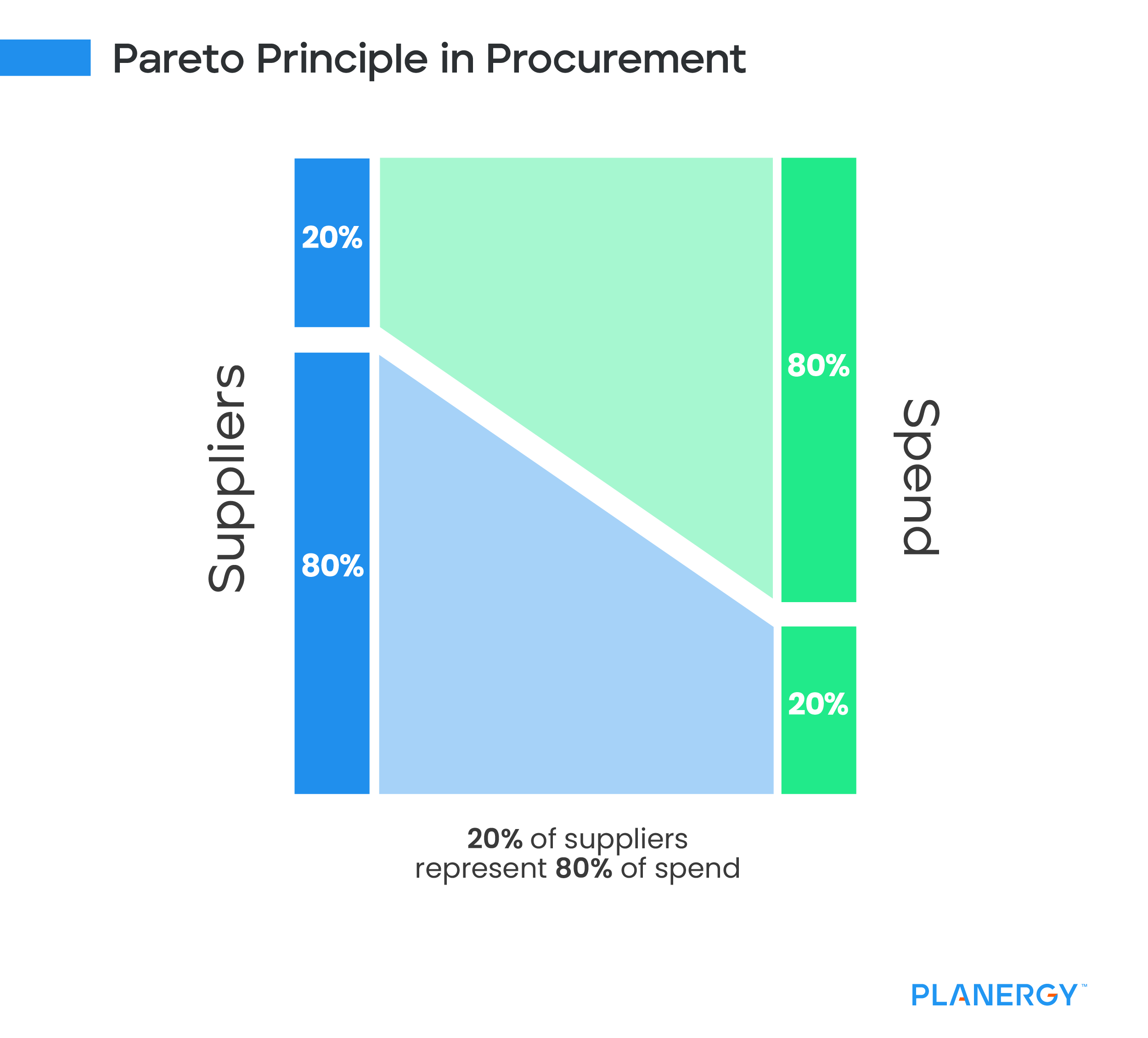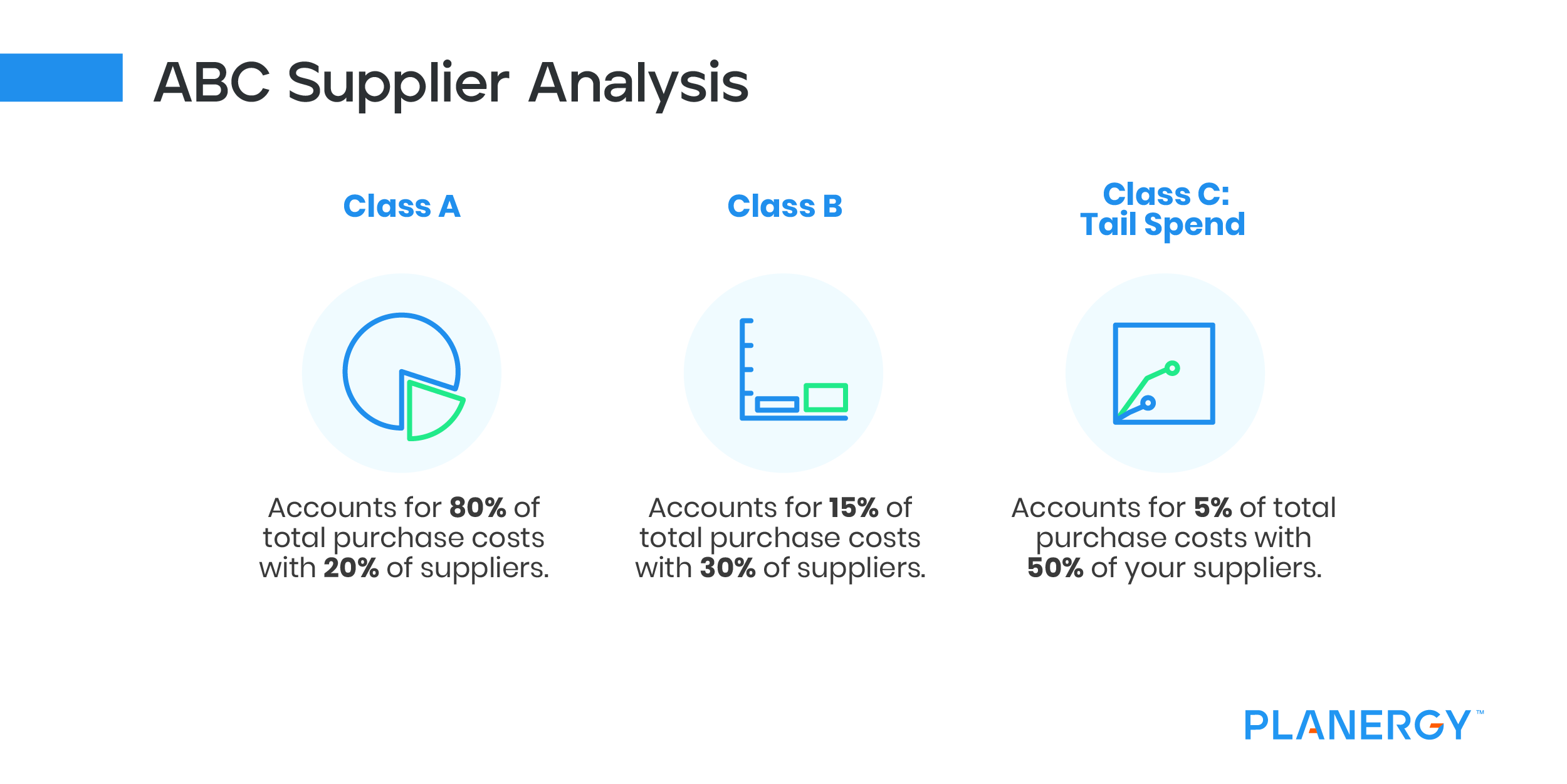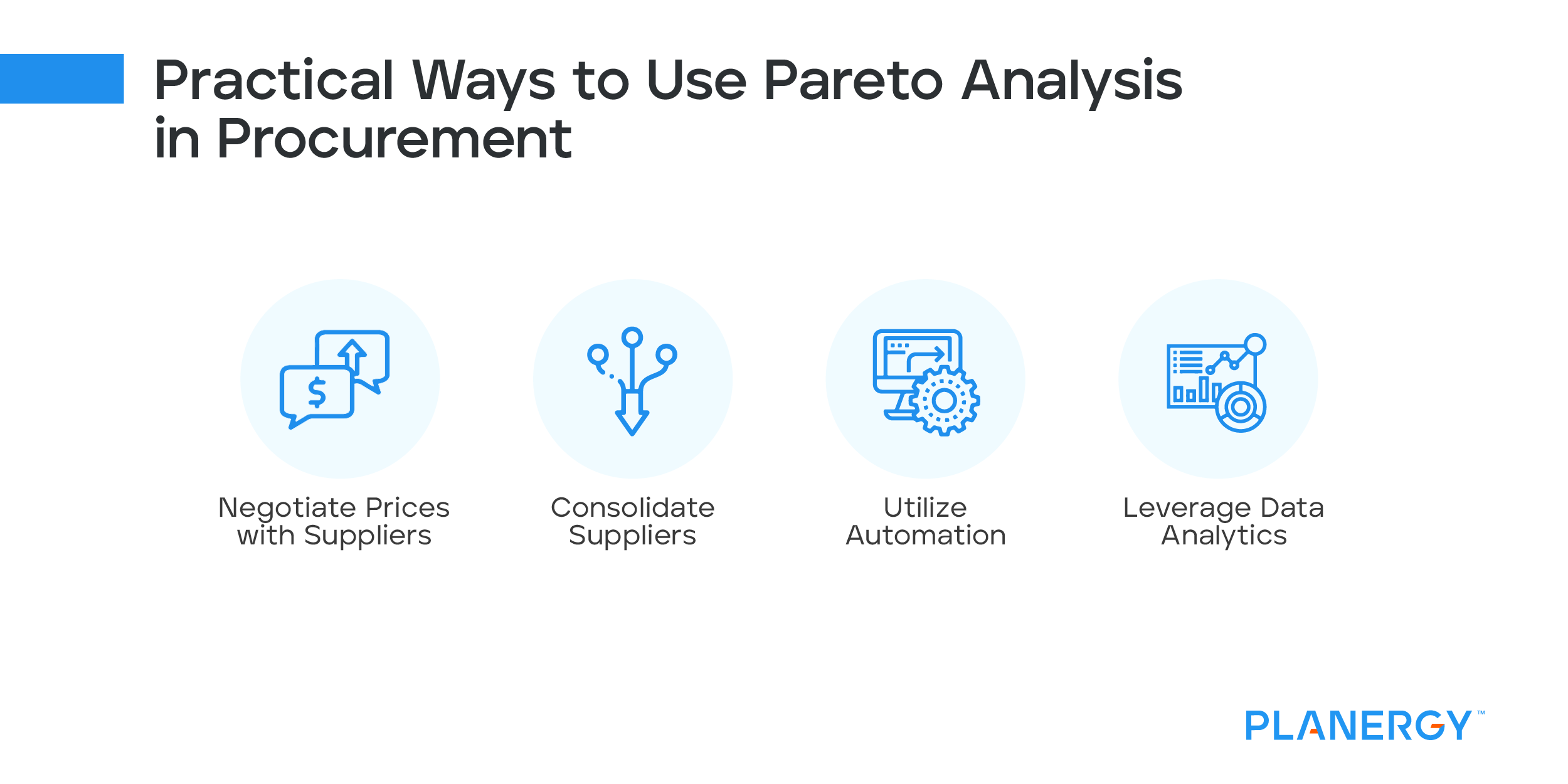The Pareto Principle, sometimes called the 80/20 rule, is an idea formulated by economist Vilfredo Pareto in 1896.
This principle essentially states that roughly 80% of outcomes are determined by 20% of causes for many events. It has been applied to various topics such as economics, business management, quality control, and mathematics.
In each situation, it is used to indicate that the majority of effects can be attributed largely to a small minority of causes or contributors. As it often proves reliable when estimating outcomes, this concept is widely used by various industries attempting to maximize their efficiency.
The same principle applies to spend analysis and procurement management: by focusing on the most expensive products and services, you can get the biggest return on investment in terms of cost savings. Let’s take a closer look at how this works.







